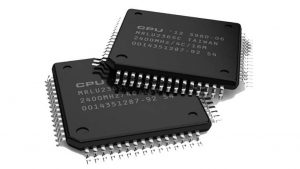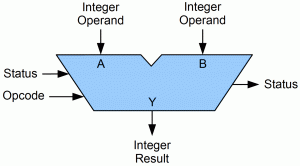What is CPU? Definition, Parts of CPU, Types of CPU and Usage of CPU
What is CPU? CPU- Central Processing Unit is also known as the processor.
Each and every Computer device has a CPU.
You might have known about this tech term previously, however what is it exactly? What is a CPU and how can it work?
What is CPU? Parts of CPU, types of CPU, what is CPU in computer? how does it work learn more about what CPU and CPU usage in computer devices.
So let’s start knowing more about the What is CPU? (Central Processing Units)
What is CPU? History of CPU and How it Work?
CPU is short form of Central Processing Unit. It is also known as the main processor or microprocessor.
It’s one of the main pieces of hardware in any digital computing framework.
Inside a CPU there are large number of microscopic semiconductors, which are small switches that control the progression of power through the incorporated circuits.
You’ll find the CPU situated on a computer’s motherboard.
A computer’s motherboard is the principal circuit board inside a computer. Its responsibility is to associate all equipment parts together.
Frequently alluded to as the mind and heart of every computer system, a CPU is liable for accomplishing basically everything. It plays out each and every activity a computer does and executes programs.
How CPU Work?
Basically, a CPU is liable for dealing with the handling of intelligent and numerical tasks and executing guidelines that it is given.
It can execute an infinite guidelines each second – however can complete just a single guidance at a time.
It initially gets a contribution of some sort, commonly from an input devices, (for example, a monitor show screen, a keyboard, a mouse, or a microphone) or from an application/system software program (like your internet browser or operating system).
Then the CPU is accountable for four task:
- Fetching Instruction from memory, to know how to deal with the input and know the comparing guidelines for that specific input information it got. In particular, it searches for the location of the corresponding guidance and advances the request to the RAM. The CPU and RAM continually work. This is also called reading from memory.
- Decoding or translating the instruction into a structure the CPU can comprehend, which is machine language (binary).
- Executing and carrying the given directions.
- Storing the result of the execution back to memory for later recovery if and when requested. This is also called writing to memory.
Finally, there is a output, like printing something to the screen.
The interaction depicted above is known as the fetch-execute cycle, and happens an infinite of times each second.
following are some of the CPU names with the processor counts.
- CPU with 2 Processor – Dual-core CPU
- CPU with 4 Processor – Quad-core CPU
- CPU with 6 Processor – Hexa-core CPU
- CPU with 8 Processor – Octa-core CPU
Each computer system contains a minimum of one CPU, but nowadays you can connect two CPUs. We can take an example of the server with the two Hexa-Core CPUs that have 12 Processors.
History: Central Processing Unit (CPU)
Before the invention of the CPU, computers are wired together to perform various tasks. From the year, 1955 the term “central processing unit” has been in use.
On the 21 June of the year 1948, the “Manchester Baby” ran its first stored program, and in the June of the year 1949, the “Manchester Mark” ran its first program.
The design complexity of CPUs improved as various technologies helped to build smaller and more reliable electronic devices. The first such development began with the arrival of the transistor.
As the many technologies helped in the building of smaller and more reliable electronic devices, the more complexity in the design of CPUs increased.
The first commercial microprocessor introduced by Intel in 1971 was named Intel 4004, the Intel 4004 is the 4-bit central processing unit.
Related Links
Features of the Central Processing Unit
Following are the features of the Central Processing Unit (CPU)
- CPU is popularly known as the brain of the computer
- All types of data processing operations performed by CPU
- CPU stores data and instructions/program
- CPU is responsible to control all part operations of the computer.
Parts of CPU
Presently you know the essential task a CPU performs for each activity occurring on a computer, what are the pieces of the CPU that assist with finishing that work?
- Memory or Storage Unit
- Control Unit
- Arithmetic Logic Unit (ALU)
Related Links
Memory or Storage Unit

Memory or Storage Unit is also known as the primary memory, internal storage, main storage, Random Access Memory (RAM), and many more.
Memory is the main part of the computer system that takes the instructions and data for processing. Though the memory is closely connected with the central processing unit, it is separated from the CPU.
The Memory is used to store the data or program instructions, but memory stores it as long as the program they concern with is in operation.
Memory splits/divides into the two general categories Random Access Memory and Read-Only Memory.
Control Unit

Control Unit of the central processing unit contains a circuit, which is used an electric signal to direct the complete computer system to carry out or execute, stored program guidance.
The Control is the director, which itself does not execute the program, but rather direct other parts of the system to do so. The control unit communicates with the memory and arithmetic logic unit.
Arithmetic Logic Unit

Arithmetic logic unit is a reason behind the digital circuit that accountable to performs some operations like arithmetic and bitwise operation with integer binary numbers
ALU responsible to perform the four operations like addition, subtraction, division, and logic operations like OR and AND.
Types of CPU
On the off chance that we take a gander at the market’s ongoing insights, it is easy to reason that AMD and Intel manufacture most CPUs. Both of these producers have build their CPUs. It is not necessarily the case that there could be no different types of CPU in the market. In this segment, we will realize exactly what those various types of CPUs are.
We have made a list of those various types of CPUs. Also, that list is mentioned below.
- Single Core CPU
This is the most established type of computer CPUs. These CPUs were utilized during the 1970s. As the name shows, these types of CPUs just have a single core processes different operations. This implies that the CPU can deal with each activity in turn. CPU continuously switches between various arrangements of data streams at whatever more than one program is begun. Therefore this types of CPU isn’t reasonable for performing various tasks. This is because this would reduce the nature of execution of the CPU.
-
Dual-Core CPU
Dual-Core CPUs hold two cores inside a single Integrated Circuit (IC). Each core also has its cache and controller. These controller and cache are connected together to fill in as a single unit. For this reason these CPU can work quicker than the single-core processors. These types of CPUs are better at taking care of performing various tasks all the more effectively in contrast with single-core processors.
-
Quad-Core CPU
Quad-core CPUs come with two double-core processors present inside a single integrated circuit (IC) or chip. This implies that a quad-core processor contains a chip with four free units, also known as cores. These cores are able of reading and executing different guidelines given by the CPU.
What makes a CPU good?
Clock Speed
A clock speed lets you know the number of guidelines a CPU that can oversee in a second and normally show how quick it is.
From the 90s to the mid 2000s, CPU clock speeds improved essentially with each new generation.
In any case, advancements in clock speeds started to level because of additional intensity generation and higher power utilization.
Here, manufacture found it more practical to improve CPUs in alternate ways, so much so that a cutting edge processor can generally perform better than a 10 year old processor that has a higher clock speed.
Cores
Initially you study that a CPU can normally perform only single activity at a time.
It executes each guidance at a time and it does this with the assistance of physical core.
Basically, a core is a CPU itself, a different devices inside the principal CPU chip. This implies that it can do only one thing at a time.
However, present day computers have capacity to carry more than one core inside the main chip.
The more core a CPU has, the more computational power and the more task that can be running and finished at the same time, making the CPU a serial multitasker.
For example, there are dual-core CPUs, importance there are two CPUs on a similar chip and can run two guidelines simultaneously.
Hyperthreading
Present day CPU also support an innovation called hyperthreading.
The way this works is that a single physical corer shows up as different physical core, making the operating system think there are a number of core than there really are. This in turn makes the computer think it has more power than it really has.
Thus, in addition the physical core referenced in the segment above, there are additionally these virtual core, or threads as they are also called.
They aren’t actual physical core, but they appear to be so.
The mix of both physical and virtual core make the execution season of projects significantly quicker and give CPU much more computational power.
Can we use GPU in a place of CPU?
No, The GPU in comparison to the CPU, though GPU can do many same things as the CPU, it cannot perform functions required by some operating systems and software.
Source YouTube: Learn Computer Science
CPU FAQs?
What is the CPU in a computer?
The CPU is the central processing unit in a computer. It takes in the information, determines what to do with it, and translates the data into binary so it can be understood by the other parts of the computer.
What are the CPU functions?
The CPU takes input, translates it into binary, performs basic functions, and sends the data to the correct output devices. It performs functions including arithmetic, logic, and cache memory.
Conclusion
Thanks for reading and making as far as possible! Ideally you presently have a superior comprehension of what CPUs are, what they do, and for what reason they’re so significant.




